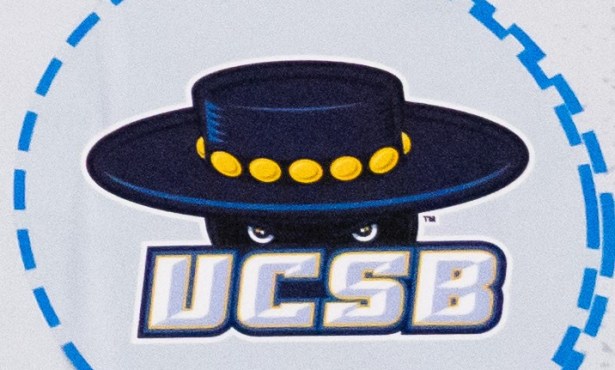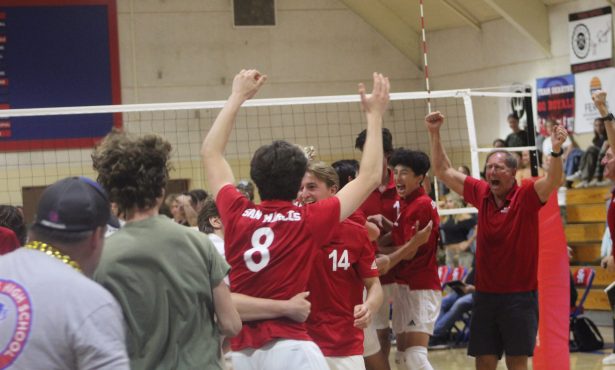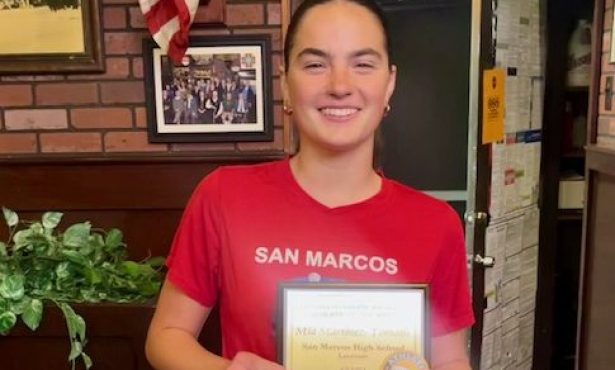Bicycle Race Glossary
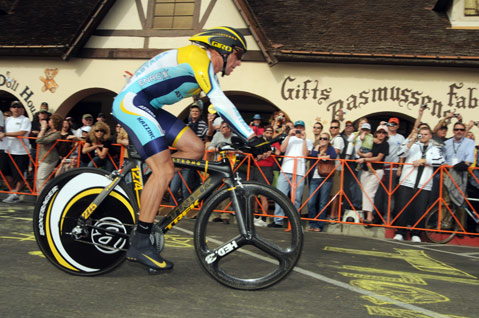
Bonk/Hit the Wall: Bad news for a cyclist. To “bonk” or to “hit the wall” means a rider falls off the pace or even drops out of the race because his or her nutrients are depleted.
Breakaway: A rider or group of riders who ride off the front of the peloton and form a lead pack. Whether they stay out in front depends on how well they cooperate and how well the peloton cooperates in chasing them down.
Broom Wagon: The vehicle at the back of the race that signals the end of the race caravan and ensures the course is clear for the reopening of closed roads.
Caravan/Follow Car: The riders are followed by a large group of vehicles that support the race. This includes commissaires, team directors, medical staff, VIPs, and neutral mechanical support. Each team is allowed two vehicles to provide riders with water bottles, food, and bike parts. A team’s best-placed rider determines the order of the vehicles in the caravan so that the athletes competing for the lead can have the quickest service when they find themselves in a dire situation.
Categorized Climbs: Climbs are categorized based on their length and average gradient (steepness). The climbs worthy of being classified are given a categorization between 1 and 4 with a “Category 4” being the easiest and a “Category 1” being the most difficult. Large mountains and extremely difficult climbs are given a “Hors Catégorie (HC)” classification, which translates to “Beyond Categorization.” HC climbs are typically the most pivotal sections because the race may either be won or lost.
Climbers: The smallest and lightest riders excel in the mountains because of their favorable power-to-weight ratios.
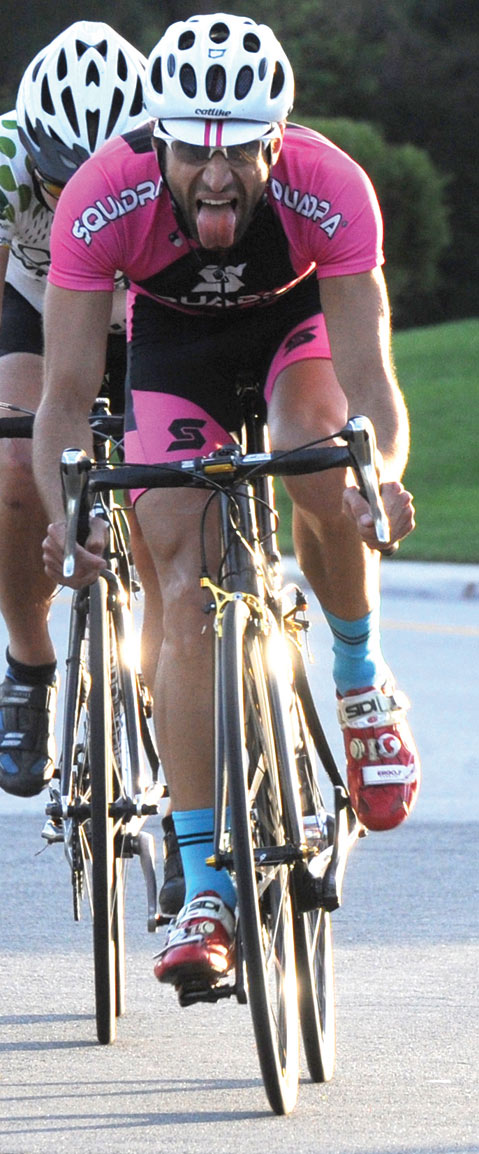
Commissaires: The officials appointed to ensure teams and riders abide by the rules of the race and sport. Rule breakers are issued fines and time penalties.
Directeur Sportif: Also known as the team director and almost always an ex-pro rider, the director sportif’s job is to set out and dictate team tactics to riders from the team car, which is fitted with a television so he can follow the action. He must be a seasoned multitasker because he needs to do all this while driving, map reading, and handing out supplies.
Domestiques: A French term for the “helpers” or “servants” on a team. Cycling is a team sport, and a team leader, primary sprinter, or star climber may find it difficult to win a race without the help of their loyal domestiques. Domestiques will shelter their teammates from the wind, visit the team car to collect extra water bottles, and chase down breakaway groups. On a rare occasion, a domestique will receive the go-ahead to race for a stage victory if the conditions are right.
Drafting/Slipstream: Riders can save a significant amount of energy by riding behind other riders. In a breakaway, riders rotate from the front of the group to the back in order to take a short rest. Larger groups are more successful because each rider spends less time riding in the wind.
Feed Zone: A designated stretch of road where soigneurs distribute musettes filled with food and drink to riders as they pass by at full speed. A rider only grabs a musette from his own team’s soigneur, who is typically dressed in a matching team uniform. The end of the feed zone is often a good place for fans to get souvenirs as riders discard musettes and bottles after taking the supplies they need.
Field Sprint: A mass sprint at the finish among the main group of riders. The finishes of Stage 4 in Santa Barbara and Stage 5 in Avila Beach are likely to come down to field sprints.
General Classification Riders: Well-rounded riders who compete for the best overall time in a stage race. These riders are typically strong climbers and time trialists who are protected by their teammates.
Gruppetto: Literally translating from Italian as “little group,” this is the last pack of riders on mountain roads, usually made up of sprinters, domestiques, and team leaders who are only riding to survive the difficult course of the day. The French call this the autobus. The goal of the grupetto or autobus is to finish ahead of the time limit, worked out as a percentage of the stage winner’s finish time. Riders finishing outside of the time limited are disqualified, so the grupetto’s pacing is very important.
Intermediate Sprints: There will be sprint finish lines within each stage — including Santa Paula, Ojai, Orcutt, Guadalupe, and Arroyo Grande — and points will be awarded to the first riders to cross them.
King of the Mountain: Points are awarded to the first few riders to cross the summits of specified climbs, this year including Casitas Pass and San Marcos Pass. Difficult climbs are worth more points, and the rider who has accumulated the most points over the course of a race is crowned at the King of the Mountain.
Lead-Out Man: Often an up-and-coming or veteran sprinter, this rider has the key task of preparing a star sprinter for a bunch sprint by keeping the pace high at the front of the peloton and sheltering his teammate from the wind. The lead-out man moves out of the way during the final few hundred meters to enable his sprinter to slingshot out of his slipstream and contest the stage win. Top sprinters like Tom Boonen can usually count on a lead-out “train” of several teammates to set them up for victory.
Musette: A cotton bag, handed out in the feed zones by soigneurs, containing food and drink.
Peloton: The main group of riders who ride together at a comfortable pace and share the pace-making.
Power Meter: A device used by professional riders to measure their physical effort during a race. Power is measured in units of watts, and riders carefully monitor their power on climbs and during breakaways to ensure they are riding within their own capabilities. The most powerful metric in elite racing is the power-to-weight ratio. Most of the riders you will see winning races ending in a mountaintop finish will have the highest power-to-weight ratio.
Rouleur/Strong Man: Literally a “roller,” this is a rider who can pedal a difficult gear for a long time on flat and rolling terrain. Every team has three or four rouleurs employed as domestiques who protect their leaders by chasing down breakaways and sheltering them from the wind.
Soigneur: From the French verb meaning “to take care of.” The role traditionally involves preparing food for the riders, driving the team’s spare vehicles, and providing massages.
Sprinter: Each team typically has one rider who has the ability to produce a quick burst of speed. Teams protect their sprinters from the wind so they can conserve as much energy as possible until the final few hundred meters. A stage win for a sprinter is always a win for the entire team.
Wheel Sucker: A negative term for a rider who refuses to cooperate with the pace-making and constantly rides in the slipstream of the others.

